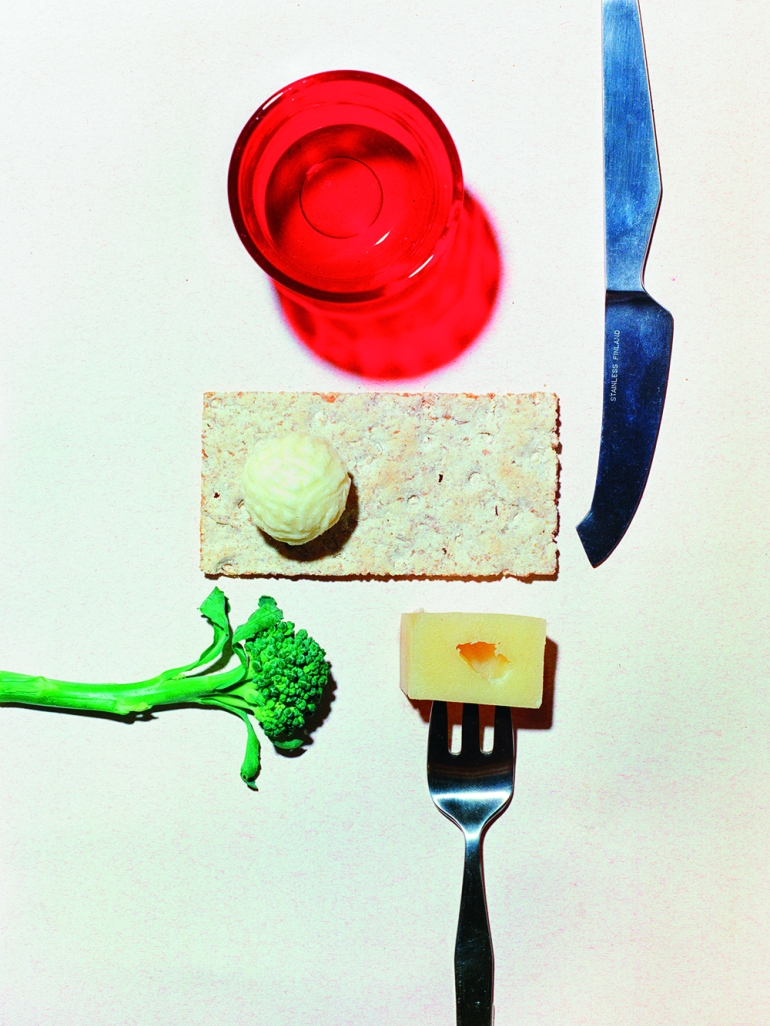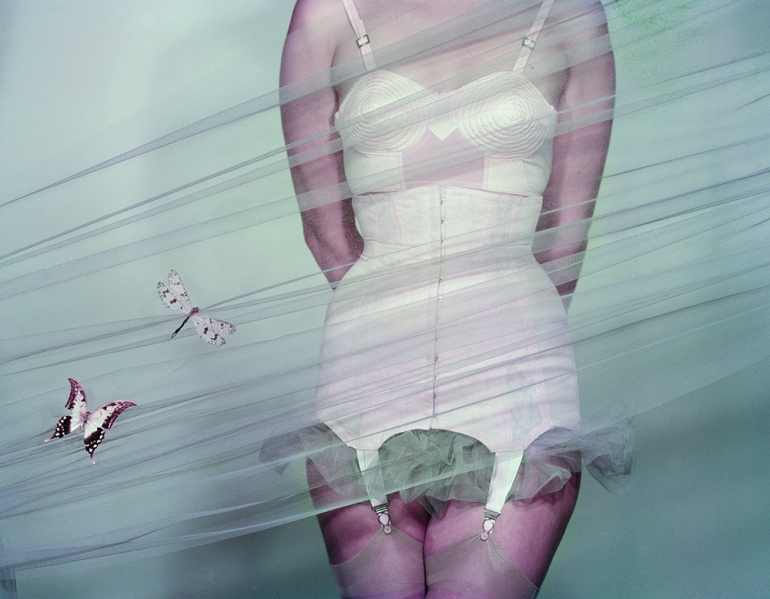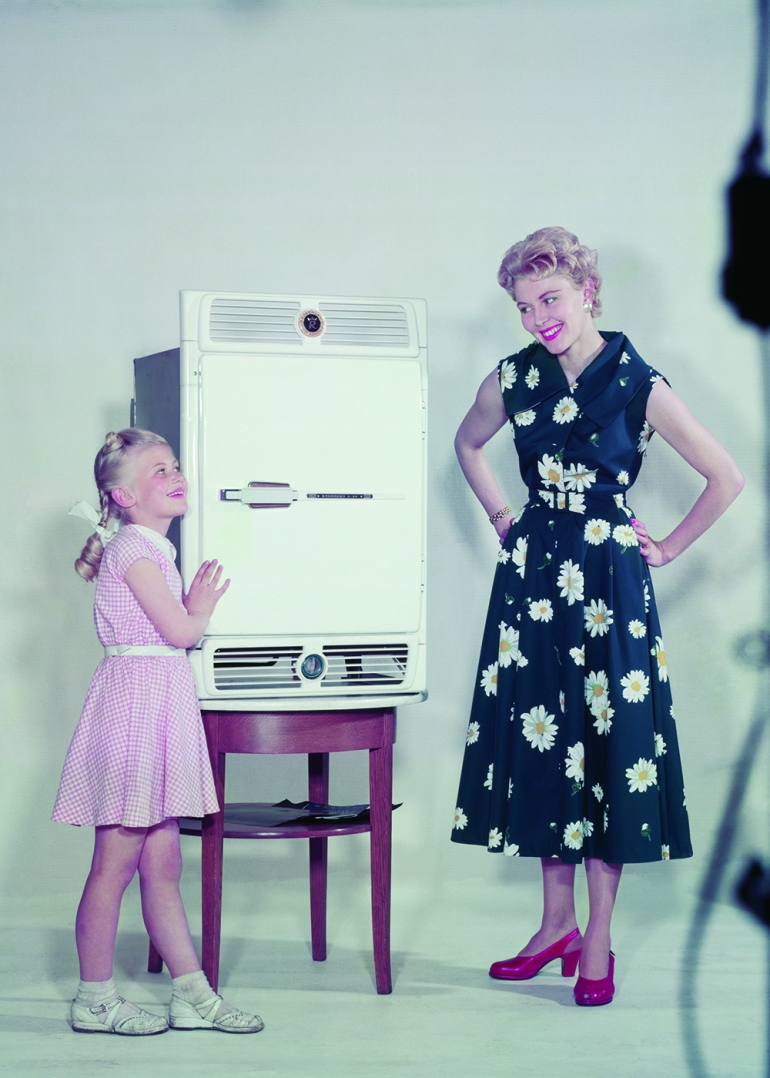Finnish photographer Claire Aho performed a combination of roles throughout her successful career. During the 1950’s she was one of a small handful of female fashion photographers in Finland; as a product and advertising photographer she was one of even fewer; and as a female filmmaker she was the only example of her kind actively practicing. ‘There was only Leni Riefenstahl and me’, she joked in an interview much later. It is only now that the narrative of Aho’s pioneering career is slowly emerging from her private archives.
Aho has appeared on the register of Finnish photo history for some time, but the breadth and quality of her work has not yet been fully acknowledged. One of the contributing factors to this is no doubt her relocation to Sweden in the 1970´s, and the fact that she did not continue her commercial practice after moving. In 2011 Helsinki Art Hall exhibited her work for the first time in a major solo exhibition, introducing her to an entirely new audience – the majority of whom were not even born when Aho was professionally active. The current emergence and re-appraisal of her work is an important addition to Finnish and Scandinavian histories of fashion, product and advertising photography.
The importance of colour
Aho´s commercial practice began in the 1950´s while working within the family business Aho & Soldan, founded by her father Heikki Aho and her step-uncle Björn Soldan in 1925, the same year that Aho herself was born. Aho & Soldan was famous for their documentary and PR films for Finnish industry, and both founders were
photography enthusiasts. 1950´s Finland was recovering from World War 2 and there were still strict rationing programs in force, which effected the availability of photographic materials in the country. A definitive turning point was the Helsinki Olympics in 1952, when Finland re-opened its doors to international influence. The most visible and popular symbol of these new and buoyant times was the arrival of Coca-Cola onto the Finnish market. The cultural atmosphere was shifting, as the war-weary country engaged itself in frenzied reconstruction work.
The Finnish magazine industry was also recovering. Regulations on paper stock were lifted and the amount of pages in individual magazines began to rise. Colour was the sign of new, affluent times: aptitude for colour photography and printing which had almost disappeared during the war years, re-emerged in post-war Finland.
Heikki Aho was one of the first to re-engage with color processes. His mail orders from the United States included guidebooks and Kodak´s 9×12 cm colour slide film sheets, compatible with large-format studio cameras of the time. Aho & Soldan film company was expanded to include a studio and a colour laboratory on their premises, situated right in the center of Helsinki, in Northern Esplanade.
Aho was responsible for the new studio and the color laboratory. An assistant was hired, and Aho’s father Heikki enforced strict quality control. He checked each color photograph with extreme care before they were handed over to clients, often using a densitometer, the non-compromising tool of the day for the measurement of technical quality.
Stainless Finland, c. mid 1960s © JB, courtesy of the artist
One might approach colour in two ways. Firstly, we might consider an element of realism, such as the photographer striving to match colour in an image to what we perceive in the real world. Secondly, the alternative to a realistic element, is the expressionistic element, capable of evoking emotions and allowing for certain distortions to take place.
In Finland during the 1950´s there was a strong need for realistic colour photography, as fashion and product photography turned from black-and-white to colour. One could still find an occasional hand-coloured black-and-white photograph in Finnish magazines at the time, despite the fact that colour films had entered the international market in the 1930´s. Colour control was new; it required skill and proficiency, and there were not many photographers who could guarantee the permanence and accuracy of colors along the whole production line, from garment or product through to the photograph. Clare and Heikki Aho excelled at this.
Fashion for magazines
Aho trained in photography while travelling with the Aho & Soldan film crew in Lapland and elsewhere in Finland, and also studied journalism. In the early 1950’s she started to work primarily in the studio, creating fashion shoots for the magazine Sorja. Founded in 1944 and changing it’s name several times, the magazine lasted until the 1990´s and was the longestrunning fashion magazine in Finland.
Assigned regularly by women’s magazines from the established publication Eeva, to the more modern Me Naiset (We Women), Aho shot fashion stories and celebrity portraits. This was a time when a new and modern type of celebrity was emerging in Finland, one who was becoming known to the public, via newly available television sets. We see many of those television personalities in Aho´s pictures, either posing for individual portraits or acting as fashion models.
1950s’ fashion became spectacularly lavish, as the nation threw itself into a spending spree after the meagre war years. Influenced by photojournalism, Aho occasionally took her models and garments outdoors to the market place or to the parks. Two iconic Finnish design labels, Marimekko and Vuokko, were founded around this time, and Finnish design in general was collecting awards in Milan and other design fairs the world over.
Aho participated in this boom of Finnish design with her pictures of garments, furniture and glass. Underwear was still considered a very delicate area of fashion photography, and Aho, being female, certainly had an advantage when navigating issues of modesty with her sitters. The models often wanted to remain anonymous, and so faces were hidden inventively with crops, poses and even masks. Aho was not the only female photographer who turned this to her advantage. In Finland, fashion photography has traditionally been the field where women photographers have been able to develop and sustain successful careers.
Figura Bra Campaign, c. mid 1950s © JB, courtesy of the artist
Product abstractions
From the made-up models and tulle dresses of Aho’s fashion shoots, to the cool practicality of her product shots, the photographer shot all manner of consumables. One can imagine her agonising for hours over how to make the Kis Kis candy from Finland’s best known sweet factory Fazer ‘fly’ in the air with the help of transparent nylon thread – each shot requiring precision timing as the studio lights melted the chocolate. Aho’s product photography at the time appeared to border on magic: the spectator falling completely for her imperfect illusions. Sixty years later, in the age digital tricks and perfection, the images reveal these naïve constructions.
Aho patiently created these illusions and built carefully composed still-lives complete with coffee packets, soft drinks and other foodstuff. She had learned the rules of composition as a child from her grandmother, celebrated artist Venny Soldan-Brofeldt, and wife of author Juhani Aho. Aho’s grandmother used the lid of a cigarette box, in which she had cut a square, to compose her paintings (the very act of smoking cigarettes was a radical, emancipatory gesture for a woman at the time). She taught the same trick to young Aho and encouraged her to take up photography. Aho maintained a keen eye for composition across her broad spectrum of image-making, but never was it more evident than in her product shots.
What is remarkable about Aho´s product compositions is the clear desire to abstract. Commercial photography may not be the most natural arena for such effects, but in many examples of Aho’s work she managed to marry her own formal interests with the commercial aims of the advertiser. Aho’s staged and directed images can be seen as tableaus of early consumer culture. In the 1950´s consumption was still optimistic and innocent; the happy consumer had no idea that the miraculous detergents would prove to be harmful to the environment , or that smoking would lead to lung cancer. New devices and electronics were developed to assist in day-to-day chores of the home. The refrigerator, one such newly available item, is photographed by Aho, stuffed with packaged food and drinks, alongside a model whose smile reflects the shinny optimism of the new appliance.
In Aho´s advertising images we can still glimpse a time when consumer culture was untainted by cynicism, shame or guilt. Almost sixty years later it looks like a lost continent. The photographer herself is still alive and well and, with the help of her son, may brings forth new treasures from her extensive archive.
Rosenlew Compressor Refrigerator, c. mid 1950s © JB, courtesy of the artist
–
Merja Salo, Professor of Photography and Visual Communication, Aalto University School of Arts, Design and Architecture, Helsinki.





really interesting! it will be very useful for my research for finnish culture’s exam.
My mother Mary Dsouza Sequeira participated in th 1952 Helsinki Olympics. She had a Finnish photographer friend named Ove Ahn who passed away shortly after the Olympics in a helicopter crash. Was trying to locate any of his work or family as he gave my mother several of his original photographs at the Olympics